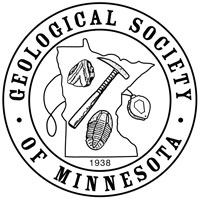Seminar Lab Date:
Seminar Lab presenter:
Seminar Lab Subject:
Seminar Lab Location :
Vincent Hall, 206 Church St. SE, Minnesota MN 55455 Room 16. MAP
Seminar Lab Details:
Summary:
The Great Basin of the southwestern U.S. is distinctive for its basin and range geology, arid climate, and desert ecology. The climate of the Great Basin, home to Las Vegas and other fast- growing metropolitan areas, has been dominated by drought in recent decades. This has spurred research to better understand longer-term climate trends and cycles in this region. In this presentation, I will discuss the ways that lakes, wetlands, and springs are used as natural archives of past hydroclimate. Importantly, these archives, which include my own work in a spring-fed shallow lake in the Pahranagat National Wildlife Refuge, show evidence of multiple episodes of century- to millennial-scale drought, thought to be at least somewhat drier than today. I will discuss evidence of three notable extended periods of drought that apparently impacted much of the region during the Holocene: A dry and warm middle Holocene (~8000 – 5000 years before present), a Late Holocene Dry Period (~2800 – 1800 y.b.p), and a so-called Medieval Climate Anomaly (~1000 – 700 y.b.p). I will also briefly discuss ideas about the broader climate system forcings from the Pacific Ocean that are thought to drive these hydroclimate events in the Great Basin.
Biography:
Kevin Theissen is a Professor in the Geology Program at the University of St. Thomas where he has been a faculty member since 2003. He teaches courses on the geological record of climate, environmental geochemistry, oceanography, and field geology. As a paleolimnologist and paleoclimatologist, he applies both geological and geochemical methods to study past climate and environmental change using lake sediment cores. His research interests include Holocene paleoclimatology and paleohydrology, the Anthropocene, paleoecology and carbon cycling in shallow lakes, and climate change education, attitudes, and misconceptions. He is currently working with undergraduate students and collaborators on research projects applying lake sediment records to explore past climate and environmental histories and recent human impacts from several different settings including the Twin Cities metro area, the Great Basin region of southern Nevada, and northern Iceland.
